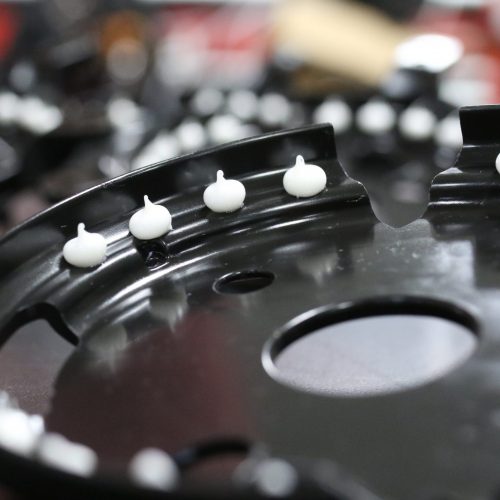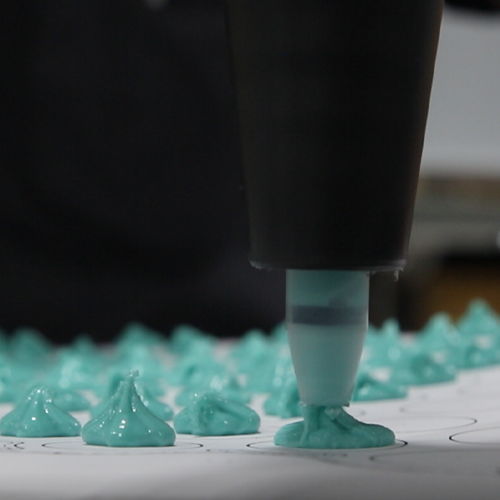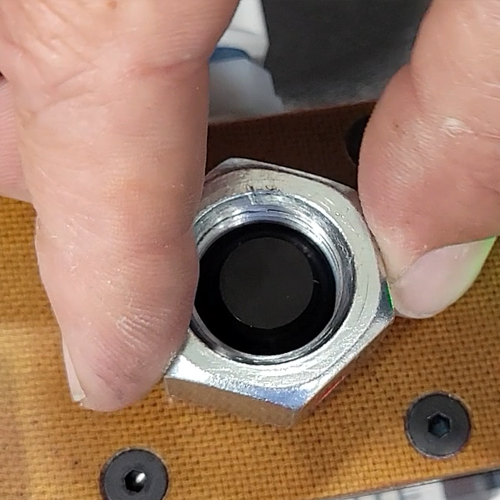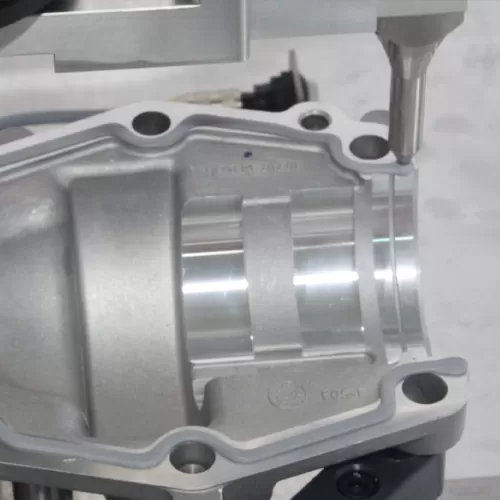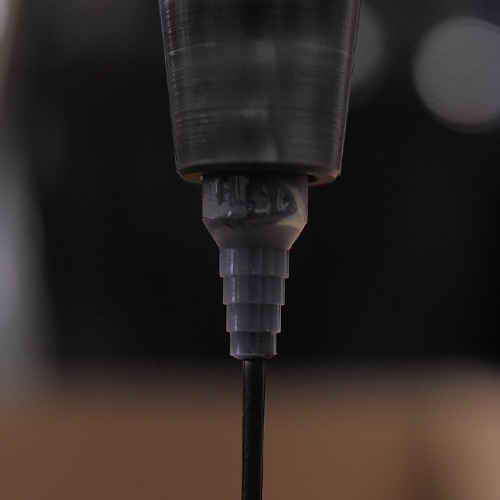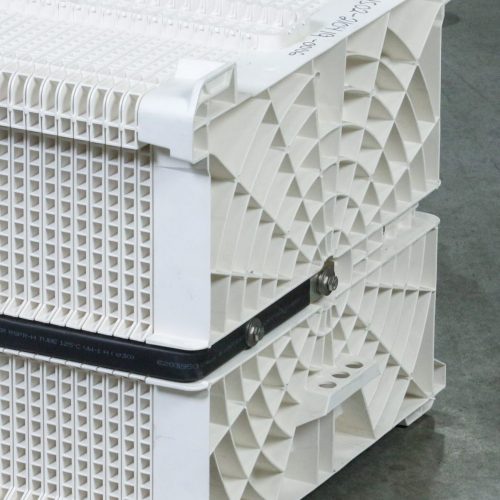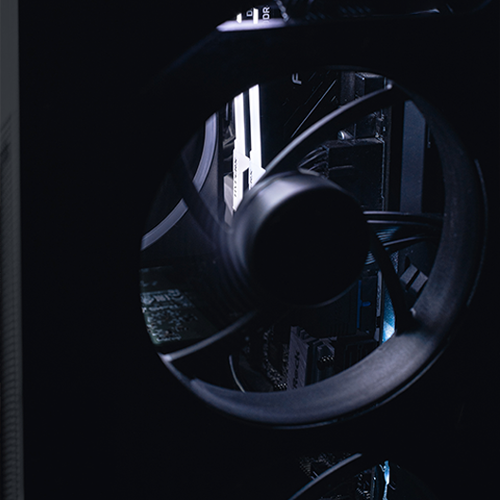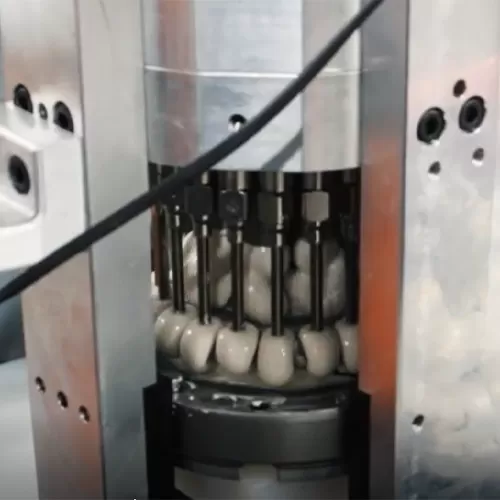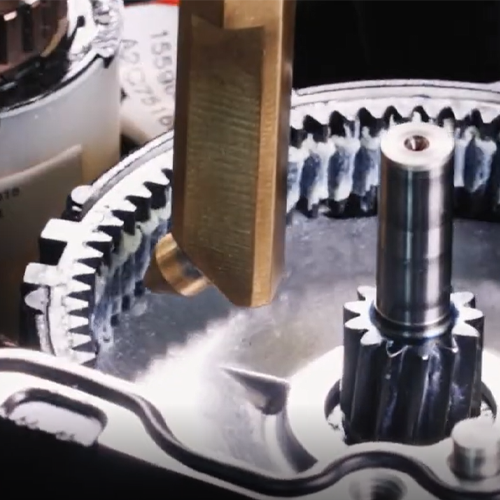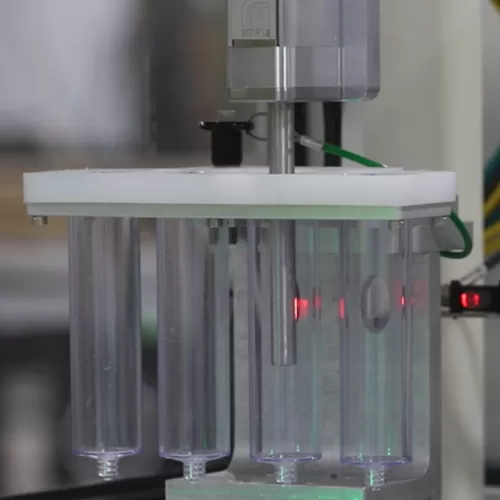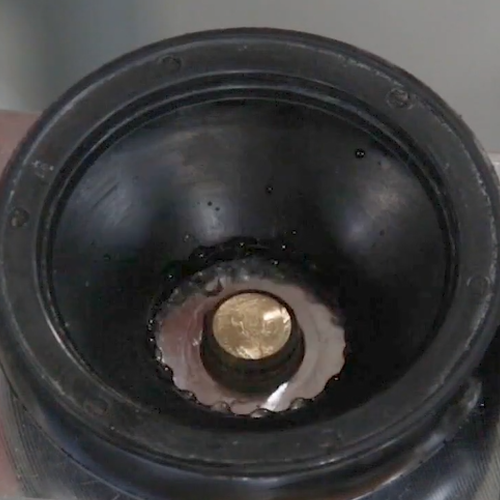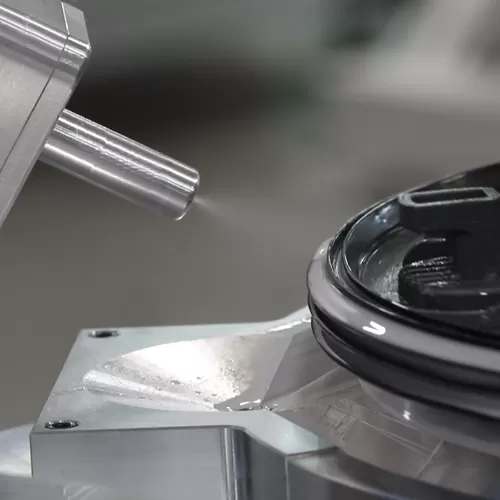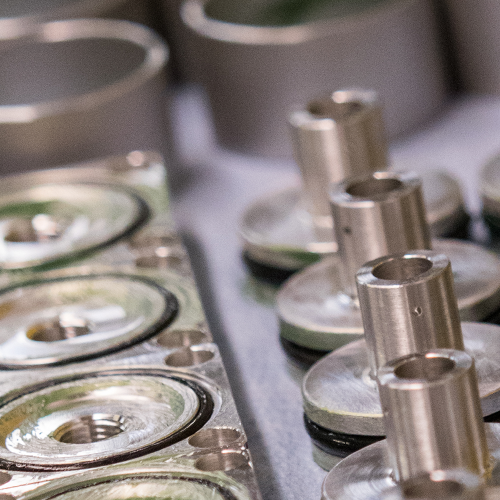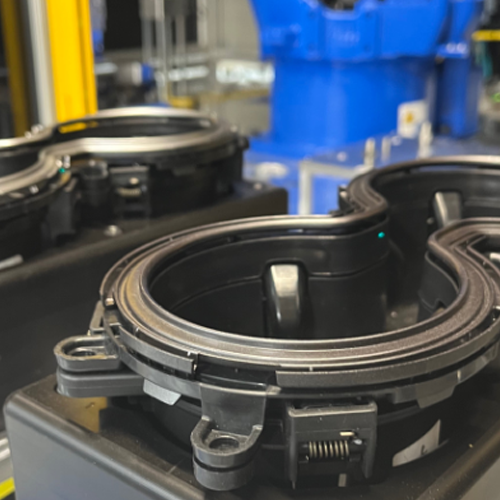Need a Production Dispensing Solution?
Dealing with corrosion? Struggling to make your assembly line more efficient? Wasting labor and money on machine maintenance? You might be missing out on the numerous advantages that come with proper material applications!
The benefits of applying adequate materials to your part or surface area can totally revolutionize your production line. A few advantages include:
- Improving warehouse cost-effectiveness
- Circumventing downtime
- Minimizing wasted material
- Increasing overall machine
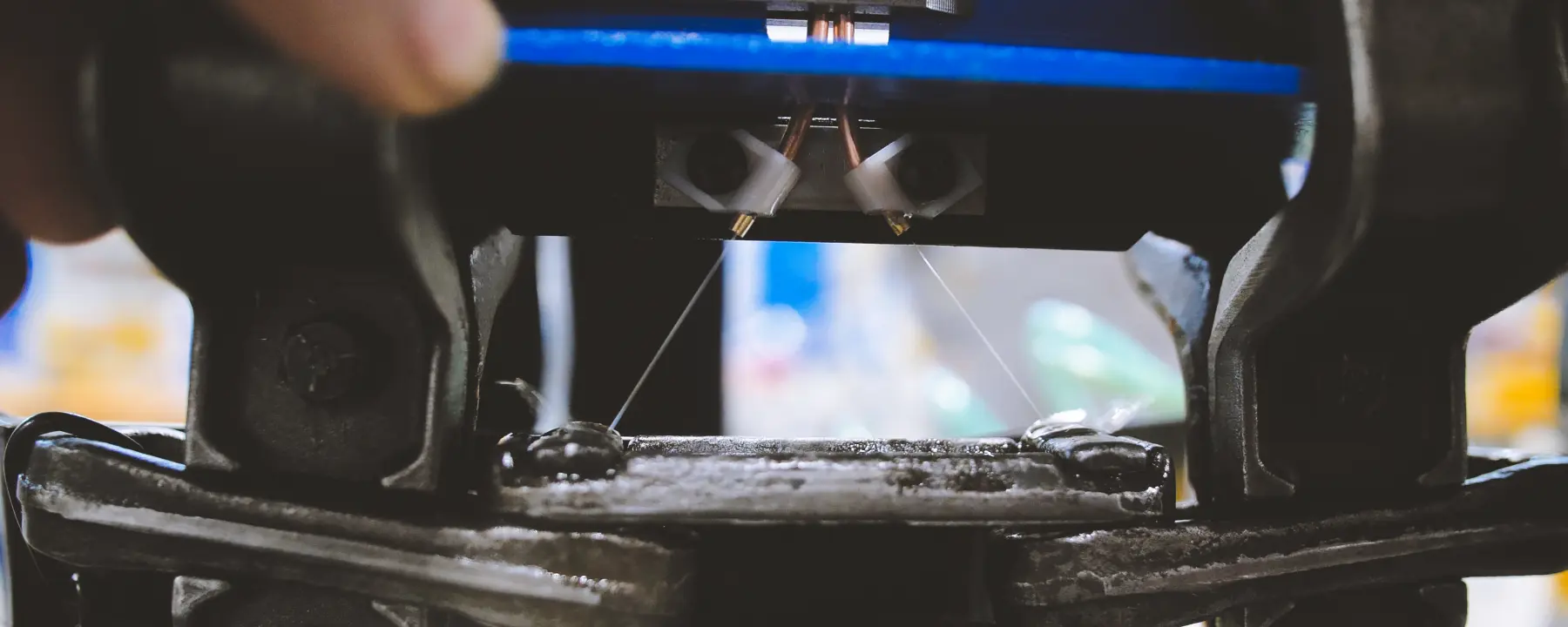
The experts at GP Reeves use critical care and acute diligence to manage your materials and ensure they are kept at the conditions necessary to serve you as efficiently as possible. Through our 50+ years of experience working with varied materials and accommodating the introduction of new ones, our team has developed a robust knowledge of various substances and the best practices for processing them. With our expertise we can effectively aid in your decision-making process.
If you don’t see a certain material listed, chances are we can still dispense it. Get in touch with us today to see how we can create a custom dispensing solution catered specifically to your unique material and application process.
We are happy to work with you to run a material validation test, fill out this form to get the process started!
Adhesive
Adhesive bonding processes allow for a tenacious connection of materials
What it is: Adhesives can be thought of as the peanut butter and jelly that stick two pieces of bread together. Without the application of those delicious spreads, all you’d have would be two slices of plain bread. The adhesion of the bread with peanut butter and jelly is how your lunch reaches the next level. The same thing happens when adhesives are applied to machinery and other parts.
Adhesives involve the combination of a polymer or resin and a curing mechanism, which makes the adhesive itself harden. When this adhesive hardening process occurs between or on surfaces, a durable bond is formed. Unlike the bond of bread slices in your PB &J, the bond created by adhesive products possesses extreme tenacity and reliable longevity. This bond is then able to transmit loads between the surfaces while keeping a secure hold of these parts intact.
While they all have an ability to deliver a strong bond to an application, there are several types of adhesives. Some examples include anaerobic, cyanoacrylate, epoxy, and polyurethane adhesives; we have a whole section on specialty materials such as UV, moisture cure, and hot-melt adhesives as we read on further.
To properly function, most adhesive materials must be consciously maintained. Due to potential harm from exposure to heat, oxygen, water vapor, freezing, and other conditions, many adhesives require extra precaution in the dispensing process.
How we handle it: Our team has created a myriad of solutions to ensure adhesives are intentionally cared for and are delivered with intense thoughtfulness towards their atmospheric conditions. We have a variety of standard pumps, dispensers, and valves to accommodate adhesives, but we also love customizing our equipment to meet your specific needs. GP Reeves has dispensed all types of adhesives to a plethora of different surfaces. From bonding headlines and ceilings, to adhering magnets on pistons, our adhesive processes are versatile and long-lasting. Our equipment is sure to make any adhesive delivery safe, effective, quick, and efficient. Our full offering of adhesive equipment can be viewed here.
Features and Benefits:
Protects Bond from Deteriorating
Resists Movement
Even Distribution of Connected Material
Minimal Shrinkage
Types of Adhesives
Two-Component
Two component (2K) materials provide durable bonds without the requirements of specific atmospheric environments.
What it is: Two-part materials oftentimes form a stronger bond than one-component materials due to the details of their curing processes. These materials have a two-part reaction that leads it to have more strength than if it were to contain only a singular base. Think of it like your favorite swirled ice cream cone. One flavor is great, but the swirl of two flavors in that sprinkled waffle cone is even better.
2K adhesives are delivered as a resin component and a hardening component. The ratio of each can have impactful influences on your application process, so it’s important to determine an appropriate ratio before application. Generally, the two components are combined just before application occurs, because once they mix, the curing process will begin. Depending on the viscosity, consistency, and cure-type of the adhesive, the 2K material used might have a variable time to be completely cured. However, once the curing process is completed, the 2K adhesive will form a strong bond with a great resistance to changes in temperature or moisture-exposure.
There are a variety of two component substances, but the four major types include two-component epoxies, methyl methacrylate, silicone adhesives, and urethanes. Each of these, as well as others, provide a tough bond to ensure long-term effectiveness and success.
How we handle it: GP Reeves has combined years of industry experience with diligent research of various manufacturing environments to craft innovative dispensers that will distribute a precise ratio at the most optimal dispense time. This allows a user’s production to occur in a simple, easy to manage manner with the precision and reliability needed.
Our team has designed specific equipment to cater to the needs of two-component materials by creating separate chambers and mechanisms for each part until the material should be ready for mixing. Along with our array of standard products for 2k materials, GP Reeves’ systems are also customizable and configurable to fit your unique two component dispensing desires.
Features and Benefits of 2K Adhesives
Moisture Cure
Moisture cure materials are soft, elastic, and durable even in harsh environments.
What it is: Moisture cure materials can be advantageous for use with difficult-to-bond substrates, materials that get exposure to higher temperatures, and sensitive materials that may benefit from this material’s low shrinkage or distortion potential. Moisture-curing materials use the atmosphere’s humidity to react with the base resin that makes its adhesive formulation. The water vapor then diffuses into the adhesive or sealant to create a solidified bond.
Because moisture cure ad/seals are resistant to UV rays, they can maintain their volume, flexibility, and elastic properties for a longer period than comparable materials. In addition, these materials are versatile and can adhere to most surfaces. Some examples of moisture curing substances include cyanoacrylates, polyurethanes, and thermoplastic polyurethanes.
How we handle it: GP Reeves has rigorously worked to develop systems to supply moisture cure materials in a manner that provides a reliable and dependable supply without premature curing. Besides our ability to configure advanced dispense systems to meet the needs of moisture care materials, we also offer additional options to accommodate an application’s unique specifications. One example involves our nitrogen blankets, which add a layer of nitrogen between the moisture cure material and open air to add an extra precaution against curing. From oven doors to airplane machinery, GP Reeves is ready to deliver moisture cure materials to ensure you have the right bond for your equipment.
Features and Benefits of Moisture Cure Adhesives
UV Cure
UV curing materials provide a strong and dependable bond with curing that meets the needs of challenging applications.
What it is: Sometimes the wait for a material to cure can be as painful as watching a pot of water boil. This isn’t the case for UV curing substances, which cure immediately after exposure to ultraviolet light or intense heat. Taking up to 30 seconds to cure, this material creates an optically clear bond that is tenacious and long-lasting. The types of UV curing materials come in epoxy and acrylate form, and the best option is determined by your unique application specifications.
Also known as light curing, UV curing materials do have a few application restrictions since it will not cure unless there is access to UV light or heat. UV curing products are great for plastics, rubbers, glass, metal substrates, and ceramics. Overall, these materials provide great durability and quick cure times for a wide array of applications.
How we handle it: Because they cure so quickly, there is a greater desire for precision when dispensing UV cure products. GP Reeves has meticulously engineered systems that will motivate rigor and exactness with every single dispense. The dispensers produced by GP Reeves work to ensure that material doesn’t have access to ambient light before dispensing, so the curing process occurs according to the user’s most desired specifications.
In addition to our various standard products, we are able to customize and configure equipment to ensure that it properly accommodates your UV material’s needs. For example, our team can integrate black-out components into machinery to add an extra aspect of protection from surrounding ambient light. At the end of the day, our team is wholly devoted to providing your application with intentional dispensing precision, and we’ll do whatever we can to ensure your material is properly cared for.
Features and Benefits of UV Cure Adhesives
Hot Melt
Hot melt adhesives consist of melted plastic that hardens to create a strong bond for even dissimilar surfaces.
What it is: The easiest way to think of a hot melt adhesive is by considering an ice cube. Hot melt adhesives exist in liquid form when heated up, just like ice when it’s exposed to warm temperatures. This molten state of the hot melt allows operators to bond countless surfaces with efficiency and speed. Once the material is applied to a surface and cools, it hardens and creates a tenacious bond, kind of like water as it turns to ice. The bond that then exists is flexible, but offers premium strength, durability, and moisture resistance.
There exists a wide array of hot melt materials, with options involving both natural and synthetic polymers. Because they are highly viscous, hot melt materials are great for substrates that might be porous or permeable. Additionally, hot melt materials can be a great option for bonds in need of detachment and reattachment since they can be repeatedly heated to liquid and cooled to solidify again. The potential of this material is endless, and it has already benefited a multitude of applications in a wide range of industries.
How we handle it: GP Reeves has successfully developed a variety of dispensing equipment to ensure your hot melt application is prosperous and advantageous. We have a wide range of equipment and accessories to ensure your application is carried out with an intense attention to detail and thoughtfulness towards the application’s external conditions. Our engineers have worked hard to create a variety of dispensing options to ensure your project receives the most advanced machinery possible.
Besides our array of standard equipment choices, we also have extra options to allow for even more diligence. One example is our heated hose, which can provide heat to a material in order to encourage better flow. Our passion for problem-solving is often emphasized with hot melt materials, and we’re always enthusiastic about our next opportunity to work with this helpful substance.
Features and Benefits of Hot Melt Adhesives
Application Examples
Sealant
Sealing materials can be delivered to supply filling, movement resistance, and material protection.
What it is:The use of a sealant can help processes that require a filling of gaps, movement resistance, or protection from contact with other materials. Unlike adhesives which bond materials together, sealants fill the gap that exists between unique materials to ensure that the space becomes air and watertight.
Sealants can be hard, tough, soft, flexible, permanent, or temporary. A sealant’s versatility depends on its type, but no matter the type of sealant, it usually has functions like supplying thermal insulation, electrical management, smoothing techniques, filling properties, and even serving as fire barriers. Examples of sealants include latex, acrylic, butyls, silicones, and polyurethanes. While these sealants might be different, they all possess an ability to elevate your filling process.
How we handle it: GP Reeves has applied our years of industry experience and passion for creating customizable machinery to ensure that your manufacturing processes feature sealant usage that is quick, easy, and innovative. GP Reeves offers sealant dispensers that ensure the same volume is repeatedly dispensed regardless of material viscosity or any external variants. Material-specific options including varying seals, tubing, and product materials are available, along with standard sensor and monitoring options. Operators can be confident that their sealant is properly applied when they put their trust in GP Reeves.
Features and Benefits:
Durability Resists Challenging Environments
Flexibility Allows for Joint Movement
Capable of Filling Uneven Gaps
Protects Part from External Debris
Types of Sealants
RTV
RTV’s, or room temperature vulcanizing material can be beneficial to fill gaps or to bind surfaces to each other.
What it is: Room temperature vulcanizing is a process of curing silicone at room temperature when it is exposed to air. An RTV material works to form a stable rubber bond to materials through a process of sulfur cross-links between adjacent polymer chains.
There are one-component and two-component RTVs, one-component RTV’s usually cures faster than a two-component. Once an RTV cures, it forms a rubber-like gasket that is tough yet flexible. This is functional for filling gaps and binding materials for even the toughest of external environments. RTVs provide users with a long-lasting durable solution and can meet the needs of applications in mechanically and environmentally challenging conditions.
There are a variety of two component substances, but the four major types include two-component epoxies, methyl methacrylate, silicone adhesives, and urethanes. Each of these, as well as others, provide a tough bond to ensure long-term effectiveness and success.
How we handle it: The skillful engineers of GP Reeves have spent time thoughtfully crafting the most optimal systems for proper RTV delivery. From absorbing engine vibrations to filling imperfect surfaces, GP Reeves can produce a supply operation that is perfect for your function’s needs. We have an array of pumps, dispensers, reservoirs, and nozzles to adequately foster a successful application of your RTV material.
We’re aware of the havoc that premature curing can cause your application and your machinery, so our team has worked hard to create certain components to enable processes to work alongside the specific attributes of RTV. An example of this is our zero cavity dispense valve option, which eliminates the possibility of air accessing material within the inner chamber of a dispense nozzle. Our goal is to help you reach yours, and we’re determined to successfully accommodate your RTV material.
Features and Benefits of RTV Sealants
Mastic
Mastics serve as an ingredient to offer a flexible yet durable bond or protective measure for a wide variety of surfaces
What it is: When an operation requires different surfaces to be united or protected, the use of a mastic provides a great solution. A mastic is a type of adhesive made from synthetic polymer components. This type of material is waterproof, durable, and flexible, so it’s able to create a reliable and long-lasting bond between surfaces. This material is especially popular when an application requires a sealed gap area, but the area still needs an ability to withstand slight movements.
How we handle it: GP Reeves has dispensing systems that allow for this heat resistant and strong material to adhere to a variety of surfaces. The thoughtful and creative team of GP Reeves has engineered dispensers to deliver mastic materials to almost any material — most commonly wood, glass, aluminum, concrete, marble, steel, and duct board.
Our engineers have worked to masterfully design pumps, dispensers, monitors, and valves to encourage the proper application of mastic materials. Along with our multitude of standard product options, we also love configuring equipment to match the desires of your unique application. The potential of a mastic dispensing system is endless, and we can’t wait to tackle the next mastic project that comes our way!
Features and Benefits of Mastic Sealants
Application Examples
THermal Interface Materials
Thermal Interface Materials (TIM) provide a reliable solution for the dissipation and adequate transfer of heat within a variety of applications.
What it is: Thermal Interface Materials (TIM) act as a catalyst for thermal energy between a heat source and a heat sink. By applying a thermal interface material to an application, heat generated by electronic devices, battery parts, and other product components can be effectively dissipated. This ensures that overall products don’t face damage or corrosion from heat, operate with maximum efficiency, and have a longer product lifetime.
Thermal interface materials are most often used in the aerospace, automotive, and battery industries, but their use is continually expanding into other markets. They come in a variety of material styles, including phase changing materials, gap fillers, thermal greases, and more. The type of thermal interface material you choose is dependent on your application’s necessities, but each type must be properly managed throughout the dispensing process.
How we handle it: Our team has meticulously designed a wide array of solutions to ensure thermal interface materials (TIM) are properly dispensed onto some of the most intensive surface areas. TIMs can have a variety of different aspects that need to be accounted for during the dispensing process. Some have components that will evaporate while others have properties of thermal expansion or contraction. GP Reeves has a full line of standard equipment to ensure any type of TIM is effectively dispensed, but we also have a passion for customizing our machinery to meet the most unique of dispensing requirements. From gap filling applications for electric semi-truck batteries to thin bond line applications to consumer products, GP Reeves can be trusted to provide a dependable and sustainable solution for your thermal interface dispensing process.
Features and Benefits:
Low Migration Risk
Thermal Conductivity
Long Term Stability
Versatile
Types of Thermal Interface Materials
Thermal Adhesives
Thermally conductive adhesives offer effective thermal management and bonding properties, reducing the need for clips, screws, or other structural components.
What it is:Thermal adhesives can be compared to the glue you used in elementary school, except it’s a lot more powerful and can dissipate heat. Thermally conductive adhesives come in the form of silicone adhesives, cyanoacrylates, polyurethane resins, two-component epoxies, and more. They may contain materials such as aluminum nitride, boron nitride, alumina, or beryllia to enhance their heat conductivity. Some of these materials are curing, while others are non-curing. Curing types of thermal adhesives are volatile materials that cure in place. They come in one-part and two-part formats and usually cure into a solid elastomer. On the other hand, non-curing thermal adhesives are non-volatile and do not cure in place. These substances are always in one-part formats and hold a high viscosity.
Overall, thermal adhesives provide a lightweight option for successful bonding and enhance thermal management between heat sinks and heat sources. Similar to potting compounds, these materials provide protective encapsulation of components. They also have variable levels of adhesion. For example, some can be applied and then completely peeled off after curing, some offer moderate yet flexible adhesion, while others provide a strong and permanent bond. By using thermal adhesives, your application can achieve increased thermal performance, a longer operational lifetime, better product quality, as well as other valuable benefits.
How we handle it: At GP Reeves we pride ourself on our ability to manage even the most complex materials. Our multitude of dispensing options can foster impressive material delivery while providing extreme accuracy, volume control, and assembly efficiency. GP Reeves has an entire line of equipment dedicated to the unique needs of two-component materials and our team has an extensive knowledge of the dispensing necessities of complex adhesive materials. Because some thermal adhesives require LED or UV light to cure, we also have special features to accommodate unique curing processes. Plus, our engineers love customizing machinery surrounding your unique applicatory needs. We’re determined to make the dispensing process of your thermal adhesive material a simple and easy step in your assembly line, so we’re especially determined to provide you with the most advanced dispensing solution possible.
Features and Benefits of Thermal Adhesives:
Thermal Greases and Pastes
Thermal greases, also known as thermal pastes, provide low thermal impedance while reliably filling thin interface areas.
What it is: Thermal greases are thermally conductive and allow a heat source to release energy to a heat sink. This type of material is chosen most often for thin bond line applications, because they have a low migration risk and can handle the constant loads applied during an assembly process. Thermal greases and pastes reliably remove air gaps or spaces and act as an insulator to electrical parts. However, something to note is that thermal pastes/greases provide no mechanical strength to an application’s mechanisms, so screws or other fixtures are still required to hold a heat sink in place.
Thermal greases and pastes are non-volatile, but normally comprise a polymerizable liquid and a certain volume of electrically insulating, but thermally conductive filler. Aluminum oxide, boron nitride, zinc oxide, silver compounds, and alloy galinstan are examples of materials that are used as fillers in these types of materials. Thermal pastes and greases come in a wide variety of packaging items and are usually easier to handle due to their lower viscosities.
How we handle it:GP Reeves can be trusted to provide you with the most advanced dispensing solution possible for your thermal grease/paste application. With our variety of specialized valves and nozzles, our machinery can successfully dispense thermal greases with consistent accuracy to the smallest of surface areas. Because some thermal pastes and greases require a low exertion force, GP Reeves has developed solutions to ensure materials are applied softly to surfaces and can reliably serve your application. Our systems are also able to handle the solvent components of various thermal greases/pastes, plus we have custom solutions available to ensure even your most unique material is properly applied.
Features and Benefits of Thermal Greases and Pastes
Thermal Gap Fillers
Thermally conductive gap filling liquid materials can conform to even the most intricate of component topographies.
What it is: Gap fillers are thermally conductive materials that offer low interfacial thermal resistance and reliable thixotropy. These gap filling substances are highly conformable, pre-cured, and are normally single-component materials. They’ve been engineered to increase the overall heat transfer that takes place within a system or component. Gap filling materials can provide very large compression ranges with only minimal compression force required. Because of this, little tension or stress is put on the electronic components during the manufacturing process. Additionally, gap fillers can conform to complex and intricate topographies and multi-level surface areas. This allows them to adequately assist a variety of applications.
How we handle it: When utilizing a gap filling material, it is likely that the distance between two components is being considered. This means that special attention must be paid to the material, it’s spread, and the viscosity it will maintain throughout its cured lifetime. GP Reeves can distribute material with extreme precision, meaning that the gap filling material will be existent only in the exact areas needed. GP Reeves also offers a multitude of custom options to ensure that the shape of the gap filler meets even the most unique standards. From serpentines and spirals to dots and Xs, GP Reeves can do it all.
Features and Benefits of Thermal Gap Fillers
Application Examples
Grease
Lubricating a system with grease can improve its production capacity, effectiveness, and increase its longevity.
What it is: Waking up with greasy hair can be gross and annoying but waking up to properly greased machinery can bring ease and cost-savings to your day. Greases used in manufacturing usually comprise a base oil, a thickener, and a certain performance additive. Additives are chosen to reach specific application goals and can enhance many properties like load-bearing capacities, water resistance, mechanical stability, and oil separation.
Different greases have various characteristics relating to their thickness, color, viscosity, and use. Some common types of grease we dispense are those between NLGI 00-1 and NLGI 2-3. With the proper grease for an application, operators can experience less machine ware, less stress on system components, less corrosion or damage, and decreased maintenance needs.
How we handle it: GP Reeves has accumulated a wealth of expertise in optimal grease delivery, and we’ve developed a multitude of dispensing machines to ensure your grease application receives the most exact and reliable delivery possible. We a vast selection of dispensing units to precisely dispense your grease material. Our team also offers customizations to provide the most optimal method of your products dispense.
We’re committed to configuring a system that exceeds your expectations! From automotive bearings to medical beds, we’ve applied grease to a variety of components and can’t wait to carry out more in the world of grease dispensing.
Features and Benefits:
Protects surfaces from corrosion
Aids in assembly
Reduced maintenance needs
Electrically conducting
Limits deterioration
Decreases operating temperatures
Water resistant
Extreme pressure properties
Types of Grease
NLGI 00-1
Greases with the classification of NLGI 00-1 are great for lubricating applications in which low viscosity material would be most beneficial.
What it is: Greases with consistencies classified in the range of NLGI 00-1 appear very soft and even semi-fluid. One could compare their consistencies to substances like apple sauce and tomato paste. These greases are great for applications requiring highly loaded gearing and they can provide great lubrication, long-term stability, and thermal resistance to a project. NLGI 00-1 greases are extremely versatile and can be incredibly advantageous to the operations of machinery systems and assembly lines.
How we handle it: GP Reeves has a brilliant variety of equipment to properly support the use of NLGI 00-1 greases. Our engineers have worked tremendously hard to create reliable products that will process and deliver NLGI 00-1 grease materials with unprecedented speed and accuracy. Our range of standard equipment has helped numerous businesses reap great rewards due to the effectiveness of GP Reeves products. Our engineers are also able to configure and customize our products to meet the exact specifications of your project, so you’ll be guaranteed the perfect accommodations for even your most unique application.
Features and Benefits of NLGI 00-1 Greases
NLGI 2-3
Grease products with NLGI classifications 2-3 have thicker consistencies and can be used to support a wide variety of lubrication applications.
What it is: Greases considered NLGI 2-3 are thicker materials that can provide effective lubrication to a myriad of component applications. Their appearance texture-wise is like that of peanut butter or vegetable shortening. NLGI 2-3 grease materials are firmer than lower classifications and can also help to guard against potential leakage from component parts.
These types of greases are widely used across industrial applications since they provide tremendous protection from ware and friction, exceptional sealing properties, and a great way to maintain your component’s longevity. Overall, greases classified within the ranges of NLGI 2-3 are reliable materials to keep your parts active for the long-haul.
How we Handle it: The determined engineers at GP Reeves have meticulously crafted top-notch machinery to properly deliver NLGI 2-3 greases to a wide array of applications. Our equipment has been purposely developed to adequately handle the thicker properties of these materials and our team has spent countless hours ensuring machinery can work at a variety of pressures to meet application needs.
While we have a multitude of standard machines to effectively support the needs of NLGI 2-3 greases, GP Reeves also offers custom options to elevate products to match your application’s specific and unique operations. We’re determined to make your delivery of NLGI 2-3 greases a successful one, so we’re devoted to ensuring our equipment is as advanced as can be.
Features and Benefits of NLGI 2-3 Greases
Application Examples
Oil
Lubricating surfaces with oil material can lead to enhanced physical and performance properties for a wide range of technologies.
What it is: Oil is a smart material choice for lubrication applications that would suffer from the thicknesses and other characteristics of grease. Lubricating oil can help to reduce the friction, heat, and ware faced by mechanical components that face high amounts of operational stress and usage. For example, those working with steel elements find oil lubrication favorable due to its ability to eliminate oxidative wear and high contact pressures that their operations often suffer from.
There are two types of lubricating oil – mineral and synthetic. Mineral oil describes lubricating base oils derived from crude oil sources. Synthetic oils, on the other hand, are produced from synthetic hydrocarbons, which ultimately come from petroleum. Lubricating oils have a significant resistance to flow at specific temperatures and pressures and are known for their ability to foster increased product-lifetime and durability.
How we handle it: Oil is one of the first materials GP Reeves ever worked with, so we have plenty of experience accommodating for its needs and developing equipment to deliver it accurately and efficiently. We have conveyor chain lubricators, dispensers, reservoirs, oil pressure vessels, and plenty of other standard products to promote a successful oil lubrication process. We also have a passion for customizing equipment to meet your specific needs. Our team will ensure your lubrication process occurs successfully and that the oil is delivered to your part with maximum precision.
Features and Benefits:
Useful in Many Applications
Prevents Ware
Dissipates Heat
Reduces Friction
Protects Against Corrosion
Supplies a Fluid Seal
Application Examples
Dry Lubricant
Dry lubricants are solid-state solutions for applications in which a traditional lubricant might not be as effective.
What it is: Don’t you hate it when the jam from your delectable morning toast gets on your fingers? You have to pause breakfast to wash your hands and get rid of that gross sticky feeling. It stinks! Luckily, this doesn’t have to be the case when dealing with lubricant solutions.
A dry lubricant is useful when there exists a need to reduce friction between two surfaces, but the application would find a liquid phased lubricant to be cumbersome. For example, dry lubricants cause minimal running or staining and produce little to no odor. Dry lubricants are dispensed in a liquid state and then dries once delivered to a surface. Most dry lubricants have a component comprising a solvent, lubricant, and a suspended UV dye, so once the material has been delivered, the solvent evaporates and leaves behind a thin layer of the lubricant and UV dye. This allows operators to have an effective confirmation of dispense leaving a durable, uniform, and long-lasting lubrication film. If a dry lubricant does not possess the UV dye, it is invisible but still maintains the qualities of reliable endurance and durable lubrication.
How we handle it: The team at GP Reeves has developed a myriad of solutions to properly deliver dry lubricants to a variety of surfaces. Our machinery constantly agitates and recirculates the material to ensure the UV powder within the solvent doesn’t settle and is dispersed adequately. In addition, we can incorporate a vision system to identify the UV dye and confirm that material was dispensed onto the correct locations. Our engineers work hard to verify that confirmation dye will be maintained in a manner that promotes the success of your overall application.
Features and Benefits:
Protects From Corrosion
High Heat Tolerance
Reduces Potential for Debris Buildup
Ideal for Applications Utilizing Human Contact
Resistant to Changes in Temperature, Pressure, or Other External Variants
Application Examples
Materials Managed for You
The team at GP Reeves is enthusiastic about developing a dispensing solution that will make your operation easier, efficient, and more successful. We’ve worked to intricately develop a multitude of products to effectively deliver a wide array of materials to even the most challenging of applications.
Just because a material isn’t included in our public glossary doesn’t mean we don’t have the skills, capabilities, and determination to provide it with a beneficial method of delivery. Our team is eager to conquer your unique application. Get in touch with us today to get the best solution possible for your material.
Have more questions about material dispensing?
Fill out the form below and we’ll follow up with you!

